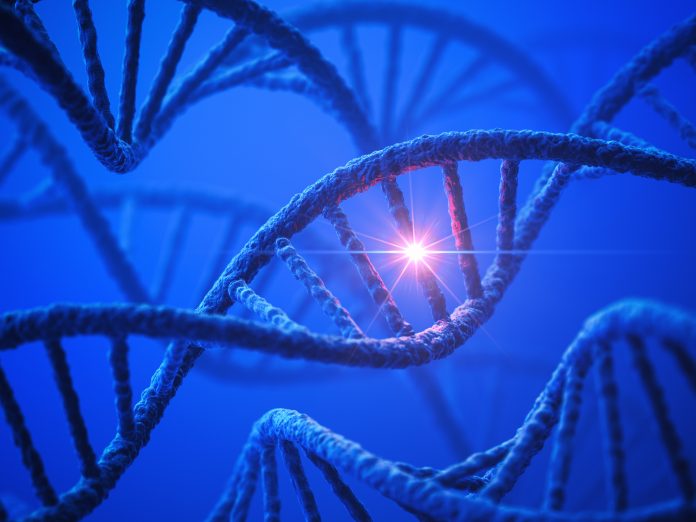
Scientists have discovered that the KRAS gene mutation, which occurs early in the transformation to cancer, leads to the abundant release of a particular type of non-coding RNA that may be useful in early cancer diagnosis.
The research team from UC Santa Cruz examined the effects of mutations in the KRAS gene in lung cancer cells and discovered that KRAS-mutant cells release transposable elements (TEs), repetitive elements that comprise 50% of the human genome, more than any other type of non-coding RNA. This discovery suggests that TEs may be a useful biomarker for developing new tests for early cancer detection. A paper describing this research is published in Cell Reports.
“We were interested in studying KRAS mutations because we know for several cancers—lung, pancreas, and colorectal—that it seems to be one of the earliest driver cancer mutations,” said senior author Daniel Kim, PhD, Assistant Professor of Biomolecular Engineering at UC Santa Cruz. “So to do cancer early detection we wanted to understand at the earliest stages of transformation how this landscape of the transcriptome changes in response to mutant KRAS.”
Protein-coding RNAs comprise about 1-2% of the human genome. However, approximately 75% of the genome is transcribed into RNA, so-called ‘dark matter’. Kim’s team wanted to learn more about the entire RNA landscape to see how the KRAS mutation influences it and what signals it first produces.
The team introduced KRAS mutations into lung cells. Once transformed into cancer, various transcriptomic analyses were performed on the cells revealing a particular signature of the RNAs secreted from these cancer cells at the very earliest stages when only the KRAS mutation was present.
“What we discovered and what was surprising, is that the non-coding RNAs were preferentially being secreted from these cancer cells that just had these mutations in KRAS,” said Kim. In particular, the non-coding that were released were coming from repetitive elements known as transposable elements, which are repetitive elements found in the millions throughout the human genome, some of which have the potential to “jump” around the genome and alter it. “There is a lot of interest now in understanding how transposable elements are involved in cancer,” added Kim, “and we really do not have a good understanding of how they respond to this earliest change in cancer, which is KRAS mutation.”
The team observed that KRAS mutation leads to a global down regulation of KRAB zinc finger (KZNF) genes that normally repress TEs in healthy cells, something Kim says has not been seen before in cancer. “But when these KZNFs are globally repressed this leads to the aberrant activation of the TEs which get transcribed into RNA,” Kim explained. Not only were these TEs found within the KRAS-mutant cells, the TEs were secreted outside in extracellular vesicles which the team could capture. After performing RNA sequencing and analysis they were able to identify all of the RNAs within the vesicles. The strongest signal came from the TEs as the earliest RNA signatures of the mutation that initiates cancer.
The cancer cells secreted many types of non-coding RNA, including mRNA, linc RNAs, and other types of non-coding RNA which are all relatively well-annotated, have normal functions, and are found in healthy cells. But TE RNAs are not well-characterized and are not highly expressed in normal cells. “In fact, you want TEs to be silenced because if they aren’t, a small fraction of them have the potential to introduce genomic instability,” said Kim.
Following this discovery, the team plans to study blood samples from cancer patients. Their goal is to see if the signature they discovered in these lab studies correlates with the blood of lung cancer patients and other patients who have KRAS mutations. Says Kim, “We hope this discovery could lead to RNA-based liquid biopsies for cancer early detection that leverages this non-coding signal that we see coming from these transposable elements.”











